The Québec maritime Blog
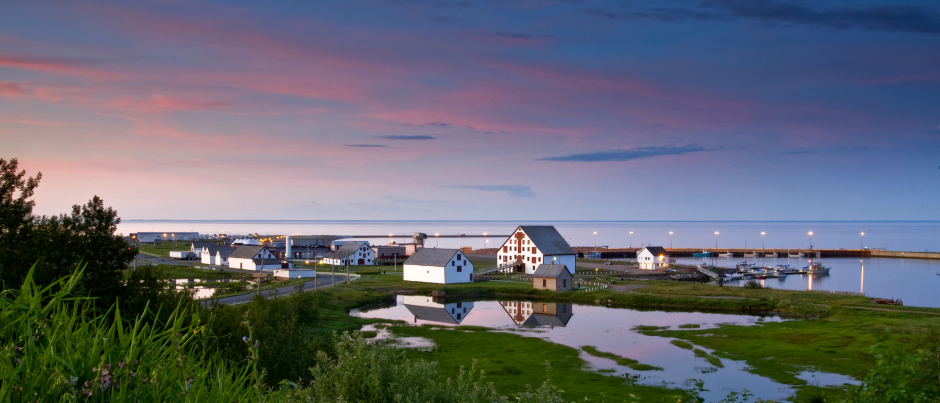
-
Paspébiac National Historic Site, Gaspésie
Marc Loiselle
4 Century-Old Tourist Sites to Visit in Québec by the Sea
Bring History Alive on Your Next Vacation!
The maritime regions of Québec have a rich history and heritage. Whether you spend your next vacation in Bas-Saint-Laurent, Gaspésie, Côte-Nord or the Îles de la Madeleine, you’ll find century-old sites to visit where you can soak up local history. Here are four that are worth discovering.
1. Île Verte Lighthouse
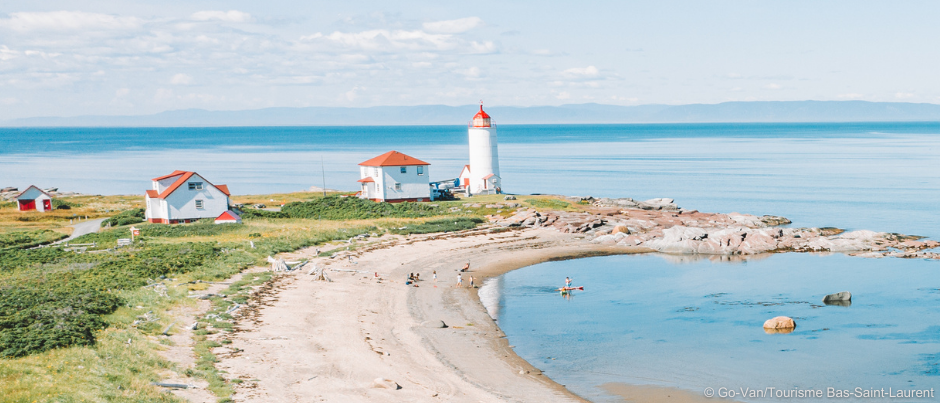
The backbone of the province of Québec, the St. Lawrence has always been an important communications route in Eastern Canada. Whether used for transporting goods or people, in the days before Route 132 was built, this waterway played a vital role in the province’s development. However, it was not without danger as the vagaries of weather made navigating the St. Lawrence a challenge. Erected on Île Verte (Green Island) in Bas-Saint-Laurent between 1806 and 1809, the Île Verte Lighthouse was the first built in Québec. Helping to ensure safe navigation on the St. Lawrence, this sentinel of the sea has long been an important landmark for passing ships.
Designated a national historic site of Canada in 1974, two years after the last lightkeeper left, the lighthouse has since become a tourist attraction. Today, you can visit a museum in the foghorn shed to learn more about the history of the site and the various lightkeepers who lived and worked in the lighthouse. Guided tours are available in the summer and include a climb to the top of the tower to admire the lantern as well as a bird’s eye view of the surrounding area. For a unique experience, you can also spend the night in either the lightkeeper’s or the assistant lightkeeper’s house.
2. Paspébiac National Historic Site
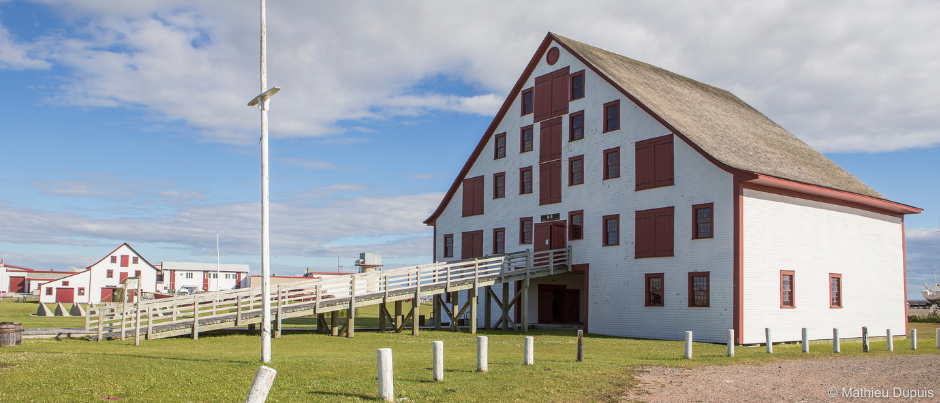
The peaceful seascapes around Chaleur Bay give no indication that this area was once a hub of industrial activity on a global scale. Located on the southern tip of the Gaspé Peninsula, the barachois in the small town of Paspébiac shelters the remains of a veritable empire on the Paspébiac fishing bank. Renowned for its fish-filled waters, Chaleur Bay was frequented long ago by the Mi’gmaq as well as Jersey Islanders and Basque fishers, particularly around Paspébiac. Buildings erected from 1783 onwards and the founding of the Robin and Le Boutillier Brothers companies transformed fishing in this area into a powerful industry and strong economic driver for the region. Paspébiac thus became one of the largest export ports for dried cod in the Atlantic, sending shipments as far away as Europe and Brazil!
The dozen buildings on the fishing bank are now classified as a national historic site of Canada. Of these, the most impressive is undoubtedly the Le Boutillier warehouse, a five-storey fishery building that’s one of the largest ever built on the North American continent. Open from early June to early October, the site is an open-air museum. Stroll around the buildings and visit each of them to hear the stories that shaped this area and then enjoy a meal at the L’Ancre restaurant on site.
3. Little Chapel in Tadoussac
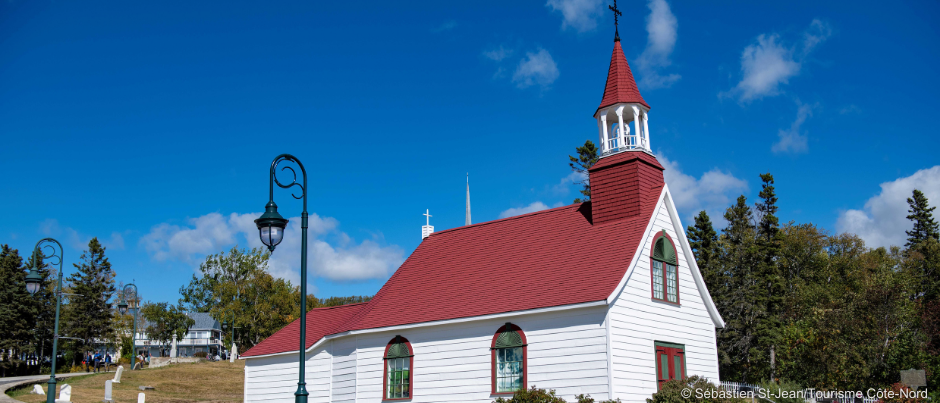
While exploring the historic centre of Tadoussac in Côte-Nord, you’re sure to spot the picturesque little wooden chapel overlooking the bay, which exudes an old-world charm with its white facade and red roof. The most observant will also notice a commemorative plaque near the front door that indicates this is the oldest wooden church in North America, built in 1747. Sometimes nicknamed the “Indian Chapel,” it hosted the first mass celebrated by Jesuits on North American soil in 1750. While Tadoussac’s ideal location at the confluence of the Saguenay River and the St. Lawrence long made the village a trading centre (including fur trading), the construction of this chapel is closely linked to the presence of Jesuit missionaries in this area.
A must-see attraction in Tadoussac, the chapel is open to the public from May to October. The wooden interior houses a small museum exhibition on the lives of the missionaries in New France and displays a variety of religious artefacts. Interpreter guides will be happy to tell you more about the history of this site. An annual mass dedicated to St. Anne, the patron saint of Québec, is held here every July 26.
4. Little Red School House
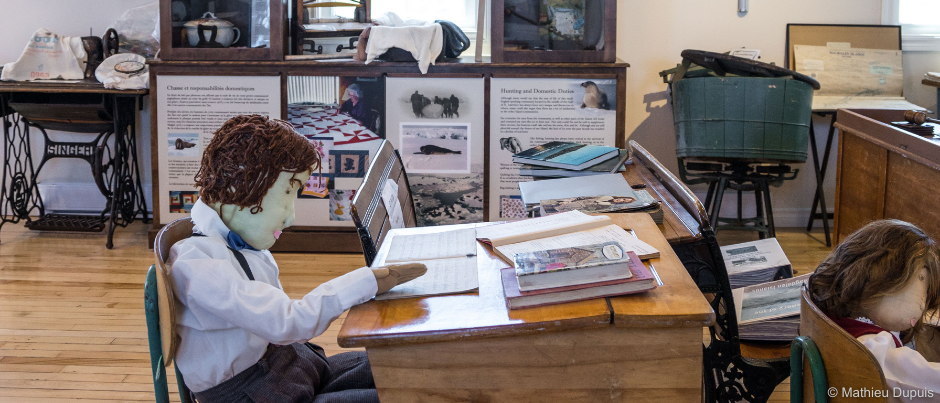
Did you know that about 5% of the population of the Îles de la Madeleine is English-speaking? In fact, the first Europeans to permanently settle on the Islands were British soldiers, whose heritage lives on today. Opened in 1922, the Little Red School House on Grosse Île provided an English-language education for the children of the village of Old Harry.
Today, this authentic one-room schoolhouse is an important part of the English-speaking community’s heritage. Once you enter the classroom, you’ll feel as though you’ve stepped back in time, to the early 20th century. The building’s educational vocation lives on, thanks to its transformation into a museum housing a permanent exhibition that gives you a glimpse into the way of life of the English-speaking community at that time. From June to September, tours are led by local guides. Don’t miss this opportunity to discover the culture and history of this island.
The maritime regions of Québec are steeped in history: our local heritage bears witness to fascinating stories and surprising perspectives that you’ll enjoy discovering. These four century-old sites are just a few of many—there’s so much more to explore in order to understand how history has shaped the Québec of today. Happy discoveries!

(0) comment